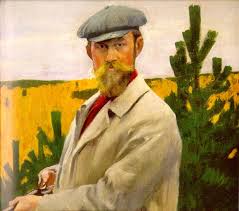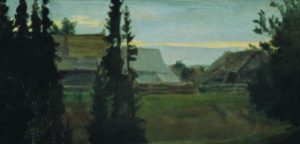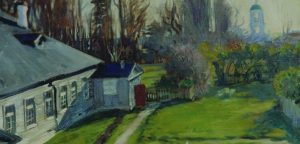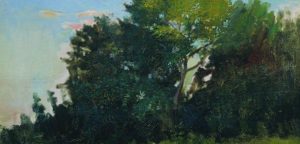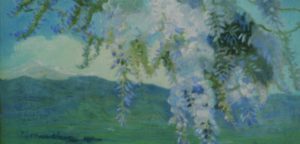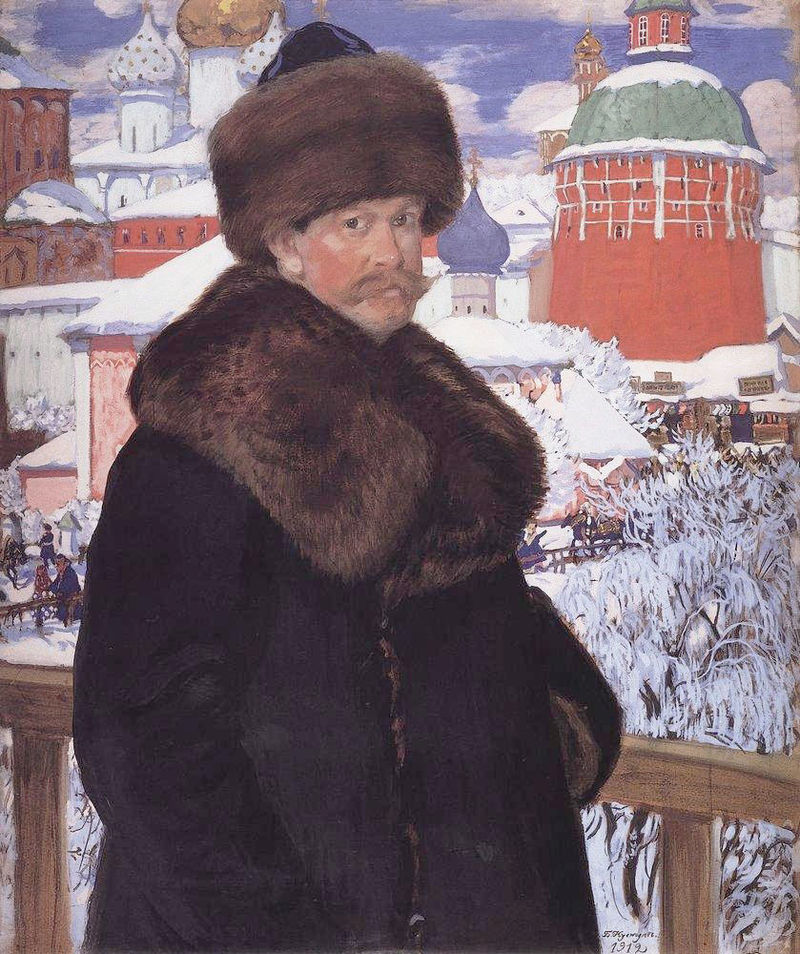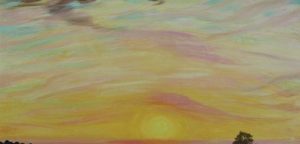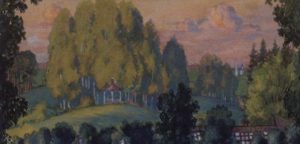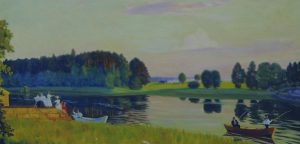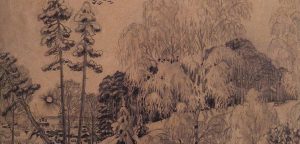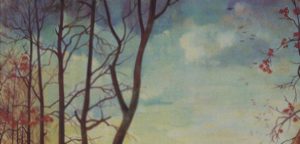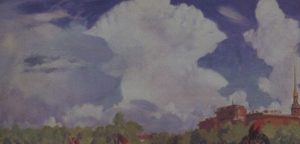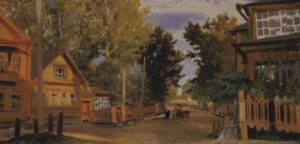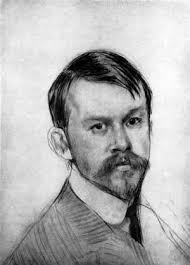Boris Kustodiev was born on the 7th of March in 1878 in Astrakhan.
1878 - 1927
Boris Kustodiev
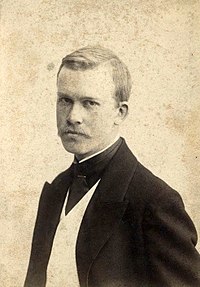
description
An outstanding Russian painter and draftsman, who worked in the genres of portrait, everyday and plot pictures, theatrical scenery.
He was born into the family of a professor of a theological seminary.
At an early age his father passed away when Boris was younger than two.
Him and his three siblings were raised by a his mother on a small pension, she also gave music lessons and sewed.
After graduating from the parish school, he studied at the gymnasium, where he got addicted to drawing. In 1887, when the 15th exhibition of Peredvizhniki artists was opened in Astrakhan, Boris, while watching paintings with admiration, decided to become an artist. His mother, despite the fact that she was poor, supported the aspiration of her son.
He was an academician of painting, a member of all the progressive communities of St. Petersburg, created in the early 20th century, but at the same time stood apart from them due to his unique talent. A self-portrait of the artist was placed in the prestigious Florentine Uffizi Gallery, and his House-Museum was opened in Astrakhan. The demand for Kustodiev’s art does not diminish – in 2012, the painting “The Cabman” from the collection of P. Kapitza sold for 4.4 million pounds sterling.
Key Ideas:
– “He (Kustodiev) is a gifted artist, loving arts, thoughtful, carefully studying nature,” – I. Repin said about his student. The artist himself claimed that «happiness and cheerfulness, love for life, life to his own, Russian» are the themes of his paintings.
– The specialties of his talent were fully revealed in the canvases where he created general images, be that the female beauty or the life of the province. The artist gradually formed his grotesque manner of the story or portrait depiction. Some irony present in the early Impressionist portrait of Bilibin is evident in Chaliapin’s portrait. The great and big singer is depicted with a kind irony: his bragging and self-admiration are easy to read.
– The artist’s favourite characters are merchants, especially lady merchants who made the painter famous, gave the art an example of Art Nouveau harmoniously merged with the lubok. Healthy demi-monde ladies drink tea, try on clothes, go shopping, wait for a brownie in the hotly heated room and look unusually palpable, like the things that surround them. At the same time, the whole world of the image (for example, a ripe cut watermelon, a ruddy cake, fruits, a large samovar and porcelain) is shown not illusorily, but is specially simplified, as it is done on signboards. This is how, according to the master, the typical features of Russia appear through the hyperbolic form. The same position is in the image of booths, festivals and fairs. The most typical holiday is Maslennitsa, and it is depicted many times and always causes a feeling of joy. It is important for Kustodiev to identify the whirlwind of emotions, and in this he is helped by the racing triple. All dynamics is based on the techniques of decorative and theatrical art: there is a contrast in the play of light and shadow, there are “backstage”, background, the decorativeness of all colors.
– The artist could be gently loving when painting his wife and children, deeply discerning when creating illustrations for the prose of Russian classics, monumental in creating panels. The versatility of his creativity did not imply scatteredness, but confirmed endless Kustodiev’s love for life.
1878
1893
1896
1903
1904
1905
1906
1907 - 1908
1909
1910
1911 - 1912
1913
1916 - 1918
1920 - 1923
1925
1927
The birth of the artist
He began attending the classes of artist P. Vlasov
While studying in the theological seminary, he began attending the classes of artist P. Vlasov, a graduate of the Petersburg Academy of Arts, whom he always considered to be his best and beloved teacher. In the summer, the teacher, who became the founder of the Astrakhan art school, went with his pupils to nature.
Entered the Higher Courses at the Academy of Arts
After an unsuccessful attempt to enter The Moscow School of Painting, Sculpture and Architecture, the young man went to St. Petersburg and entered the Higher Courses at the Academy of Arts, where he studied with Savinsky. At the 2nd course, he moved to the workshop of Repin, who became his mentor and even his colleague (the master invited the student to work together to order).
He graduated from the Academy with a gold medal
Went to Kostroma to search for materials. There he met “smolyanka” Julia Proshinskaya (they lived in love for many years). He graduated from the Academy with a gold medal, receiving a grant for study trips. Participated in international exhibitions in St. Petersburg, Munich, received a grand gold medal of the International association. At the end of the year, went to Paris together with his wife and son.
The qualified artist dared to enter a private Parisian studio
The qualified artist dared to enter a private Parisian studio, visited exhibitions, museums and galleries in Germany, Spain, studying old masters and copying their works. Painted his famous “Morning” in the style of impressionism.
Created his first book illustrations
Created his first book illustrations – he did it during his whole artistic career, creating paintings for Gogol, Lermontov, L. Tolstoy and others, showing deep immersion into the core of his works.
"Terem"
Upon returning to his homeland, he left for Kostroma, where he worked hard and built a quaint little peasant mansion – “Terem”. The artist, briefly departing, lived there for a long time, traveling around the neighborhood. He created the series of paintings “Fair”, “Village Holidays”, often depicted his small daughter and grown-up son, placing their figures into the storylines.
Made a trip to Italy
Made a trip to Italy, got carried away with sculpture, became a member of the Union of Russian artists, worked as a decorator at the Mariinsky Theater, participated in exhibitions of the Union of Artists, in the First Group Exhibition of Russian Artists of the Vienna Secession.
“For his fame in the artistic field"
The Academy of Arts, on the proposal of Repin and Kuindzhi, chose the artist as an academician of art “for his fame in the artistic field”. He felt symptoms of a backache. In the next three years, the illness turned the young healthy man into a disabled man, although did not impact his skill and efficiency.
Entered “The World of Art”
Entered “The World of Art”, started painting a group portrait of its members (only a sketch of it remains), conducted lessons at the workshop of Zarudnaia-Kavos, took part in the last exhibition of the Union of Russian artists and in the exhibition of “The community of L. Da Vinci” as its member.
Received a course of treatment in Switzerland
Received a course of treatment in Switzerland, having obtained permission from the staff to paint scenery for Ostrovsky’s play; their success ensured permanent orders. He visited Dresden, painted a portrait of Grand Duchess Maria Pavlovna, a self-portrait for the Uffizi Gallery.
Had an operation in Berlin
Worked at the New Petersburg art workshop and at the Moscow art theatre (created decorations and sketches of costumes). Had an operation in Berlin, and in 1914 became a participant of the exhibition at the Parisian Gallery of the Bernheim gallery, International exhibitions in Venice and Rome. The famous and popular portraitist received an order from Nikolay (created in 1915).
Despite the beginning of the paralysis, the artist worked hard almost lying down
Despite the beginning of the paralysis, the artist worked hard almost lying down, participated in the creation of the “ideological” design of Petrograd for the first anniversary of October. Created “Maslenitsa” (1916), the monumental “Stepan Razin”, “A merchant taking tea” (1918), etc.
His first and only personal lifetime exhibition was held at the Petrograd House of Arts
His first and only personal lifetime exhibition was held at the Petrograd House of Arts; the artist painted a portrait of Shalapin and copied it (the variant of 1921is now in France); created illustrations for two books of Leskov, created a series of fine art works “The Four Seasons”. Became a member of The Association of Artists of Revolutionary Russia.
Went to Moscow
To design the play, went to Moscow; received an honorary diploma at the International Parisian Exhibition, made his last trip across the Volga; later, according to his “a room became a world”. At the exhibition of The Association of Artists of Revolutionary Russia in 1926, 24 works of the artist were sent to the department with the ambiguous title “Formal Quest”.
The death
He died on the 26th of May in 1927 in Leningrad.

